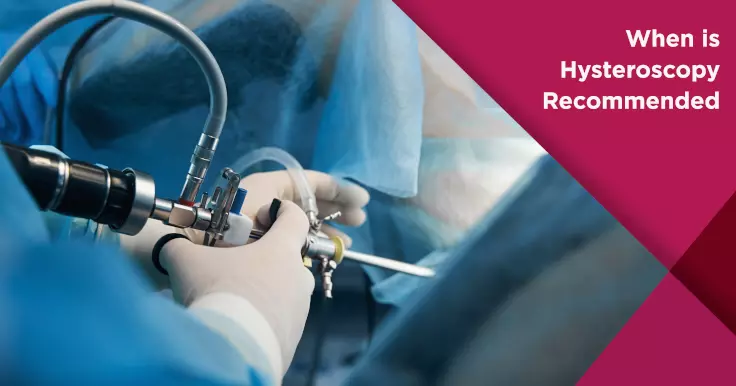Hysteroscopy Procedure: What to Expect

Hysteroscopy is a procedure in which a device is inserted through the vagina into the patient's uterus to check for abnormalities. Hysteroscopy requirement is essential when you are finding it difficult to conceive and are trying to find out why it is not happening. Let's take a look at when hysteroscopy is required and how the procedure takes place.
When is Hysteroscopy Required?
You will be asked to go through this procedure in the following situations:
- If you have heavy periods
- If you have abnormal bleeding premenopausal and postmenopausal
- Location and retrieval of lost intrauterine devices or foreign bodies
- Evaluation of patients trying to concieve
- Exploration of the endocervical canal and uterine cavity in patients with repetitive pregnancy loss
- Diagnosis and possible removal of growth inside the uterus
- To remove any adhesions which were caused due to an infection or a surgery
- To take a biopsy of your uterine lining
- Tubal sterilisation
The Procedure
Before carrying out the procedure, the patient is given a sedative so that it is not painful. The doctor could also give medication to dilate the cervix so that the hysteroscope passes easily into the uterus.
The hysteroscope is inserted into the patient's vagina to view the uterus properly. The instrument is moved inside to get clear images of the uterus and the opening of the fallopian tubes.
If the doctor is using this procedure for diagnosis purposes, they will be able to see all the abnormalities clearly on the display and diagnose the issue. The imaging will also give you answers to why you are not able to conceive. If the doctor is using the procedure for surgical purposes, along with the hysteroscope, the doctor will also insert tiny surgical tools for performing the surgery.
Hysteroscopy for diagnosing problems takes very less time when compared to hysteroscopy for surgeries and operations. Some women experience spotting or mild bleeding as a result of the procedure, however, it is nothing to worry about.
 Infertility Counselling
Infertility Counselling Female Infertility Treatment
Female Infertility Treatment Andrology Treatment
Andrology Treatment Fertility Enhancing Surgeries - Female
Fertility Enhancing Surgeries - Female Fertility Enhancing Surgeries - Male
Fertility Enhancing Surgeries - Male Endoscopy Treatment
Endoscopy Treatment IUI Treatment
IUI Treatment IVF Treatment
IVF Treatment ICSI Treatment
ICSI Treatment Advanced IVF Solutions
Advanced IVF Solutions Embryology
Embryology Vitrification Egg, Embryo, Sperm Freezing
Vitrification Egg, Embryo, Sperm Freezing Preimplantation Genetic Testing (PGT)
Preimplantation Genetic Testing (PGT) Donation Program Embryo / Egg / Sperm
Donation Program Embryo / Egg / Sperm Self-cycleTM IVF
Self-cycleTM IVF

 Self-cycleTM IVF
Self-cycleTM IVF










